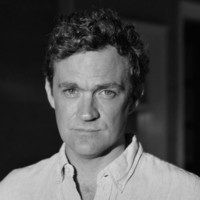Matthieu Aikins is a contributing writer at The New York Times Magazine who has reported on Afghanistan since 2008. His new book is The Naked Don’t Fear the Water: An Underground Journey with Afghan Refugees.
“I think at some point you just say, screw it. I'm gonna act like a human being and help my friend. That's the most important thing. You actually realize, yeah, now that we're in it together, the only thing that matters is both of us staying alive and staying safe and getting where we need to go. And whatever I have to do to do that, I'm going to do.”














